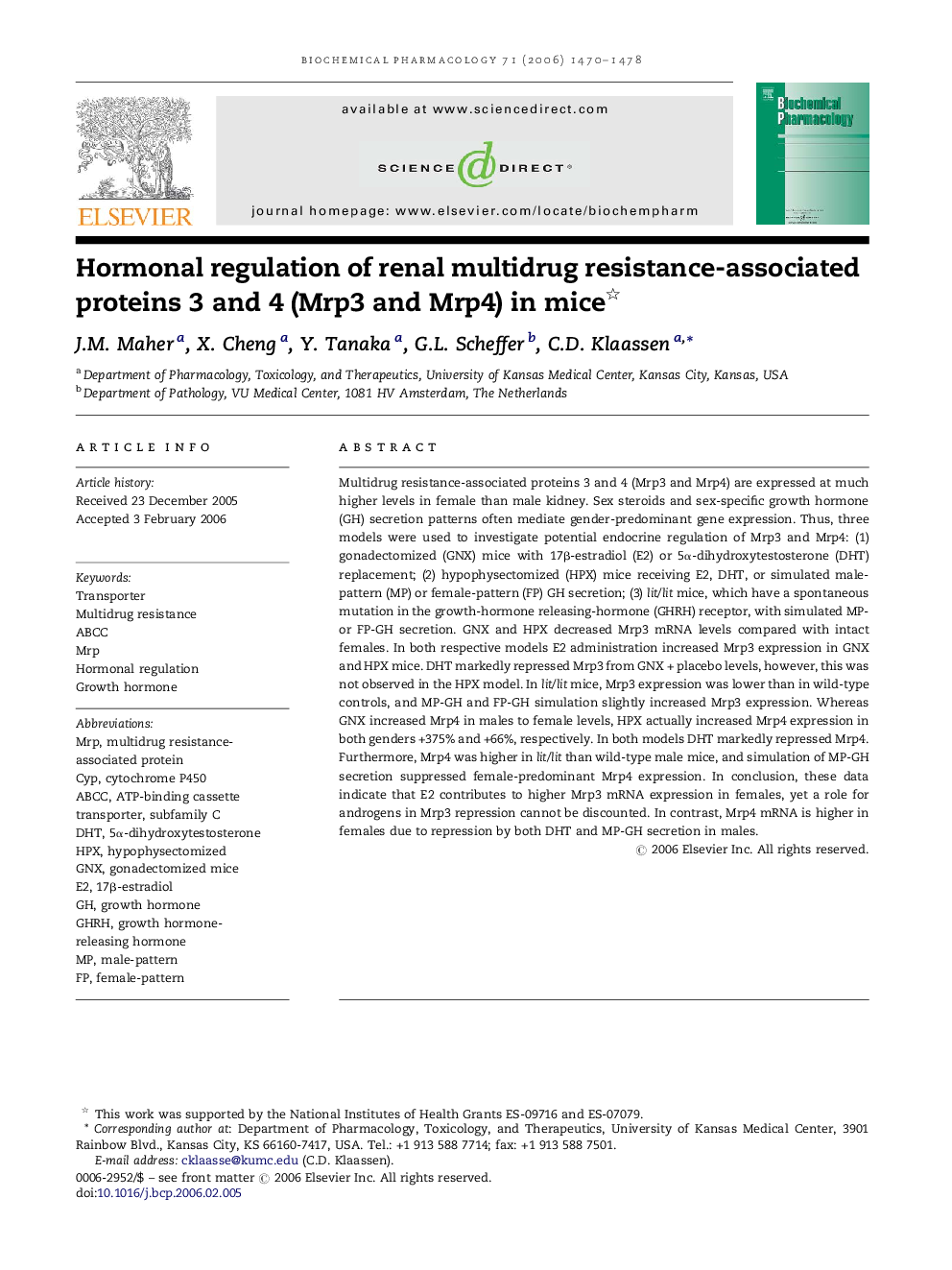| Article ID | Journal | Published Year | Pages | File Type |
|---|---|---|---|---|
| 2515452 | Biochemical Pharmacology | 2006 | 9 Pages |
Multidrug resistance-associated proteins 3 and 4 (Mrp3 and Mrp4) are expressed at much higher levels in female than male kidney. Sex steroids and sex-specific growth hormone (GH) secretion patterns often mediate gender-predominant gene expression. Thus, three models were used to investigate potential endocrine regulation of Mrp3 and Mrp4: (1) gonadectomized (GNX) mice with 17β-estradiol (E2) or 5α-dihydroxytestosterone (DHT) replacement; (2) hypophysectomized (HPX) mice receiving E2, DHT, or simulated male-pattern (MP) or female-pattern (FP) GH secretion; (3) lit/lit mice, which have a spontaneous mutation in the growth-hormone releasing-hormone (GHRH) receptor, with simulated MP- or FP-GH secretion. GNX and HPX decreased Mrp3 mRNA levels compared with intact females. In both respective models E2 administration increased Mrp3 expression in GNX and HPX mice. DHT markedly repressed Mrp3 from GNX + placebo levels, however, this was not observed in the HPX model. In lit/lit mice, Mrp3 expression was lower than in wild-type controls, and MP-GH and FP-GH simulation slightly increased Mrp3 expression. Whereas GNX increased Mrp4 in males to female levels, HPX actually increased Mrp4 expression in both genders +375% and +66%, respectively. In both models DHT markedly repressed Mrp4. Furthermore, Mrp4 was higher in lit/lit than wild-type male mice, and simulation of MP-GH secretion suppressed female-predominant Mrp4 expression. In conclusion, these data indicate that E2 contributes to higher Mrp3 mRNA expression in females, yet a role for androgens in Mrp3 repression cannot be discounted. In contrast, Mrp4 mRNA is higher in females due to repression by both DHT and MP-GH secretion in males.
